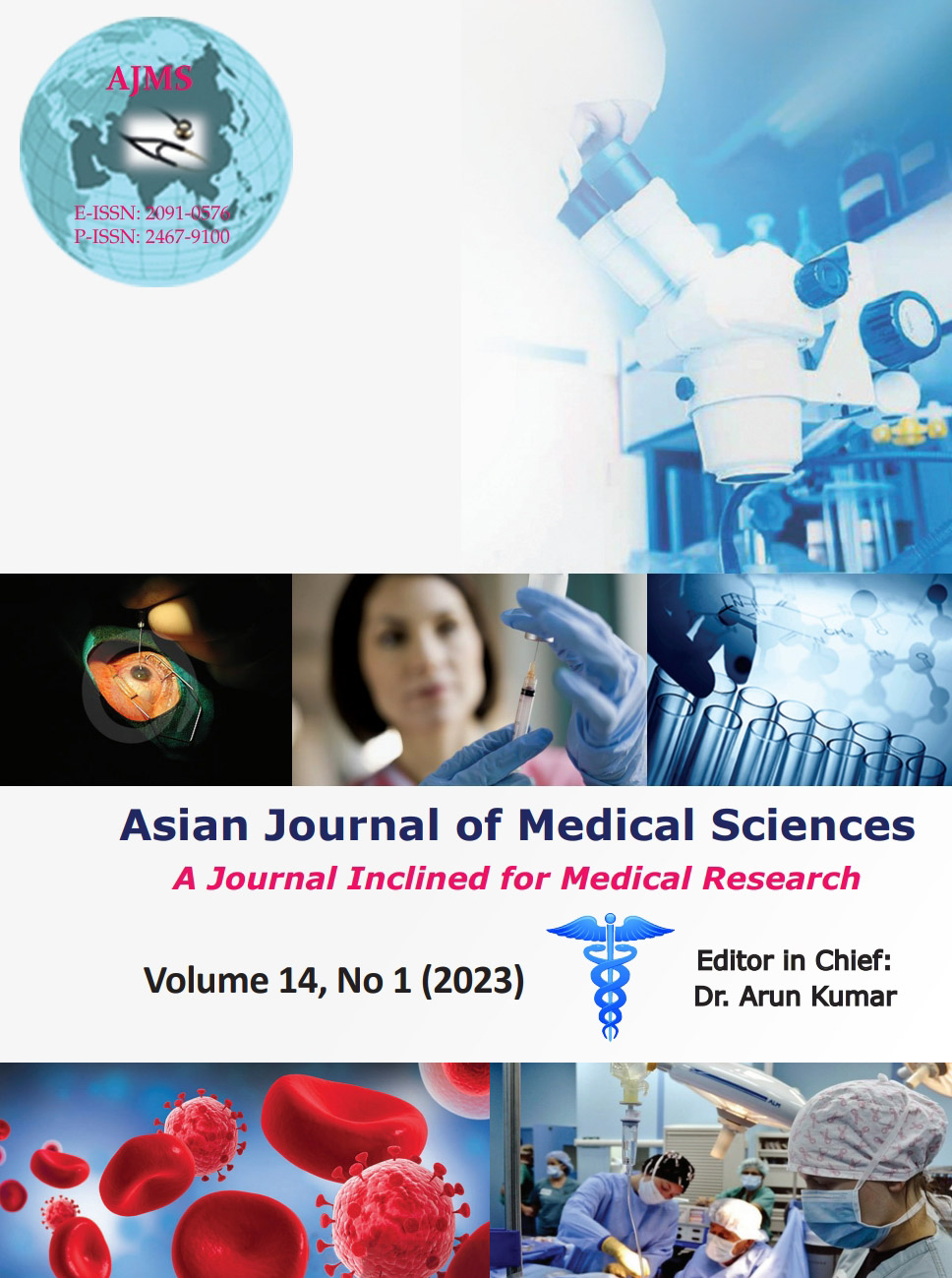A cross sectional study to assess prediction of microalbuminuria using neutrophilto- lymphocyte ratio and red blood cell distribution width in diabetic patients
Keywords:
Diabetic nephropathy; Inflammatory markers; Microalbuminuria; Neutrophil-tolymphocyte ratio; Type 2 diabetes mellitusAbstract
Background: This study was devised to evaluate the predictive value of neutrophilto- lymphocyte ratio (NLR), mean platelet volume (MPV), and red blood cell distribution width (RDW) to detect microalbuminuria in type 2 diabetic patients. This can help in early detection of microalbuminuria and assessment of prognosis inn patients suffering from type 2 diabetes mellitus (DM).
Aims and Objectives: The objectives of the study were to assess the diagnostic accuracy of microalbuminuria using neutrophil-to-lymphocyte ratio and red blood cell distribution width in diabetic patients.
Materials and Methods: A total of 188 patients with type 2 DM were selected for this study. Subjects were classified into three groups based on hemoglobin A1c and microalbuminuria. Group A had 63 patients with controlled diabetes, Group B had 62 patients with uncontrolled diabetes, both without microalbuminuria, and Group C had 62 patients with uncontrolled diabetes with microalbuminuria. Levels of NLR, MPV, and RDW between the study groups were analyzed.
Results: A significant difference in NLR was found between Group C and Groups A and B (P<0.001 and P=0.005, respectively). RDW was significantly different between Groups B and C (P=0.014). Receiver operating characteristic curve analysis was done between NLR and RDW. The area under curve was found to be of 0.678 for NLR (confidence interval: 0.59–0.75, P<0.001) and 0.616 for RDW (confidence interval: 0.49–0.73, P=0.013). The study shows that an NLR cutoff point of 2.54 has 39.7% sensitivity, 78.8% specificity, and 45% positive predictive value (PPV). An RDW cutoff point of 14.44 has 37.9% sensitivity, 76% specificity, and 41.5% PPV.
Conclusion: NLR and RDW can be beneficial to detect microalbuminuria in diabetic patients.
Downloads
Downloads
Published
How to Cite
Issue
Section
License
Copyright (c) 2022 Asian Journal of Medical Sciences

This work is licensed under a Creative Commons Attribution-NonCommercial 4.0 International License.
Authors who publish with this journal agree to the following terms:
- The journal holds copyright and publishes the work under a Creative Commons CC-BY-NC license that permits use, distribution and reprduction in any medium, provided the original work is properly cited and is not used for commercial purposes. The journal should be recognised as the original publisher of this work.
- Authors are able to enter into separate, additional contractual arrangements for the non-exclusive distribution of the journal's published version of the work (e.g., post it to an institutional repository or publish it in a book), with an acknowledgement of its initial publication in this journal.
- Authors are permitted and encouraged to post their work online (e.g., in institutional repositories or on their website) prior to and during the submission process, as it can lead to productive exchanges, as well as earlier and greater citation of published work (See The Effect of Open Access).




